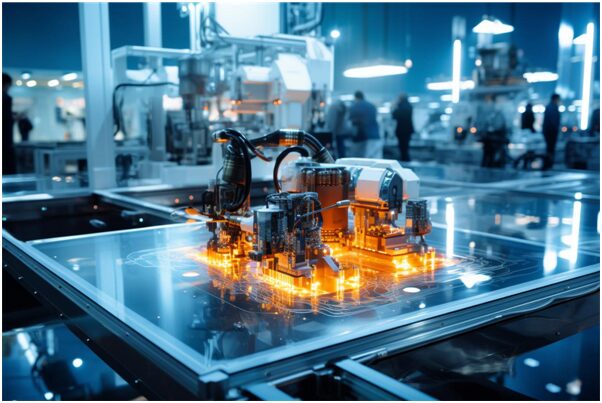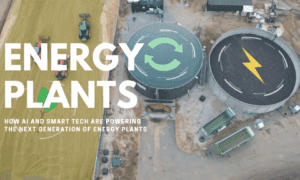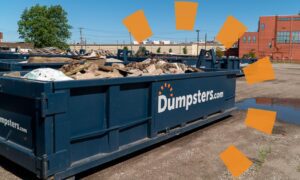Materials science is the foundation of modern energy technologies as it finds solutions for the latest challenges. Whether in power generation, storage, or transmission, the advancements in energy utilizationare significantly influenced by the development of advanced materials.
Innovations in new energy materials, custom integrated circuits, and high-voltage insulators are reshaping the way energy is produced, stored, and distributed. In this article, we’ll explore the latest technologies that are driving the transformation of the energy sector.
Materials in Energy Utilization
Our demand for energy continues to rise. It puts pressure on national grid suppliers to provide us with a stable and efficient energy supply for energy utilization. However, traditional electric power construction faces the following most common problems:
- Inefficiencies on transmission
- Energy losses
- Reliance on non-refundable resources
These challenges underscore the need for advanced materials that enhance efficiency, durability, and sustainability within the energy sector.
Materials science is at the heart of breakthroughs in energy utilization. Researchers and manufacturers are developing lithium-ion battery materials, advanced insulators, and next-generation grid control technologies.
These innovations improve energy storage, transmission, and overall system efficiency. Integrating custom integrated circuits and high-performance battery materials can drive the industry toward a smarter and more sustainable energy future.
Key Innovative Materials
(1) Composite Insulator
These modern insulatorsolutions are loved worldwide because of their superior performance in heavy pollution areas and their lightweight design. Composite insulators are made with a silicone rubber sheath and glass fiber-reinforced core.
These materials minimize the risks of flashovers and exhibit excellent hydrophobicity. They are resistant to weathering and UV radiation. That’s why they provide long-term durability, especially in harsh climates. Moreover, they are perfect for the following application scenarios:
- High Voltage Transmission Lines: Composite insulators are used to support and insulate power lines from towers.
- Substations: They protect electrical components from overvoltage and environmental damage.
- Renewable Energy Utilization Systems: Composite insulators enhance insulation in wind and solar farms.
(2) Separator Coating Equipment and Material
Separator coatings play a crucial role in lithium-ion battery materials. This equipment applies a thin protective layer to the lithium battery separator. This not only improves its mechanical strength and thermal stability but also increases its electrolyte compatibility. This technology contributes to improved safety and efficiency of lithium-ion batteries. It can be widely used in the following settings:
- Electric Vehicles (EVs): Separator coating equipment provides reliable battery performance in high-demand applications.
- Grid Energy Storage: It increases the durability of national grid suppliers’ battery storage systems.
- Consumer Electronics: Supports longer-lasting batteries for mobile devices and laptops.
(3) Lithium Iron Phosphate (LFP)
Lithium Iron Phosphate (LFP) is a type of lithium-ion battery cathode material. This material is known for its safety, long cycle life, and environmental benefits. Compared to traditional lithium-ion chemistries, LFP batteries provide us with the following advantages in energy utilization:
- High Thermal Stability: They are less prone to overheating and thermal runaway.
- Longer Lifespan: LFP batteries offer a long lifespan, often enduring thousands of charge cycles while maintaining capacity.
- Eco-Friendly: LFP batteries contain no toxic heavy metals, which makes them more sustainable.
They are widely used in electric vehicles, renewable energy storage systems, and backup power systems.
Future Prospects
The future of LFP technology looks promising as it is continuously evolving. Research and development is focusing on increasing the energy density and reducing production costs. As lithium-ion battery cathode materials improve, LFP has the potential to become a leading choice in the market for sustainable energy utilization and storage solutions.
Contact Changyuan Technology Group (CYG) for the Latest Solutions
CYG EMBG (CYG Electricity & New Energy Materials Business Group) is one of five core business groups of Changyuan Technology Group(CYG). It primarily focuses on the research, development, and production of high-quality and highly reliable composite insulators, customized FPC integrated circuits, and lithium-ion battery-related manufacturing equipment and materials. Whether you’re in electric power construction, grid control, or national grid supply, CYG provides tailored solutions to meet your needs.
Why Choose CYG?
- Innovative Materials: Advanced new energy materials for improved performance and durability.
- Comprehensive Solutions: From custom integrated circuits to lithium battery separator technology.
- Proven Expertise: A trusted insulator supplier with a strong track record in the energy utilization industry.
Conclusion
Materials science is transforming the way we produce, store, and distribute energy. From high-voltage insulators that improve power transmission to lithium-ion battery materials that enhance energy storage, innovative materials are at the heart of the energy revolution.
CYGis developing advanced energy utilization materials to support energy infrastructure. Their expertise spans custom integrated circuits, lithium battery separators, and high-performance insulation materials. These solutions are designed to boost efficiency and safety in power systems. For example,in the fild of composite insulators, there are over 10 million CYG units operating safely worldwide.
Visit CYG’s official website and contact them to learn more about these innovations.




































